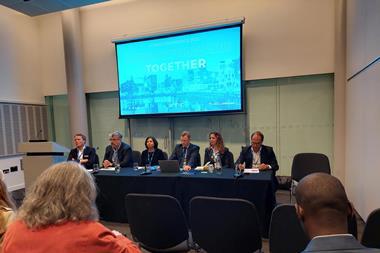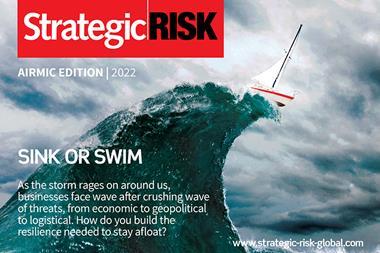Knowing where to start with ESG can be daunting for even the most seasoned of risk managers
Knowing where to start on implementing an ESG framework can be daunting for even the most seasoned of risk managers. Embarking on the journey is often the hardest part, and once you’ve got started, taking the right steps in the right order is key.
The world has dramatically changed over the past few decades. Nowadays, having a business is about people, planet and prosperity. It’s a world where we are more focused on sustainability and companies can’t afford to ignore that, because their customers and investors will start to think with their feet.
Getting started on ESG [environmental, social and corporate governance] is a bit like dealing with other emerging risks, such as cyber. Right at the very beginning, when we were thinking about how we build this into your day-to-day work, that’s where it was difficult.
Every week, I have businesses across every imaginable sector coming to us who haven’t yet really embraced ESG. We have risk managers who have been doing it for several years and risk managers who are right at the beginning of their journey.
Each organisation is unique and we support them, wherever they are on the journey and whatever they are seeking to do next.
At Marsh we’re trying to demystify it,and to build it out as a six-step process. It’s about understanding what the risk is and then determining what you’re going to do about it. Once you’ve started to get your arms around it, you can then look at your wider value chain.
Supply chain is a critical dimension of ESG and when businesses seek to make other businesses accountable, it naturally drives change and adaptation.
Start as you mean to go on
As an industry, we are making swift progress, but don’t have all the answers and in five years’ time ESG will be much more mature. But as we’re at the start of the journey, we’ve got to lay the right foundations. You’ve got to start as you mean to go on.
Some organisations haven’t had the luxury of taking a lot of time over this, because there has been pressure for things like accountability for TCFD reporting. So for instance some organisations have had to go from zero to 100 miles per hour. But then they need to back up and look at all the ESG risks.
The risk manager can’t avoid ESG. From an insurance standpoint, insurers are beginning to ask them about their ESG credentials. We came up with a saying that, ‘if you don’t assess your ESG and climate risk, someone else will’.
These days, you are being judged and scrutinised and that’s where ESG differs from CSR - it’s the outside world looking at you.
That’s why the reputation part of ESG is such a concern and that’s borne out by this year’s Airmic survey. The other reason why risk managers have to be involved is regulation.
TCFD is now mandatory for many businesses and an entire pillar of the framework is devoted to risk management, with scenario modelling among the required approaches.
The risk manager therefore becomes a bit of a focal point, because they have a lot of that knowledge already. Risk managers are practical people and in their day-to-day role they think about risk mitigation.
With ESG, mitigation is about change and adaptation and laying that out thoughtfully, bearing in mind every company is on their own journey to net zero.
Dr Bev Adams is Consulting Director and Head of Climate Resilience and Strategy at Marsh Advisory.
World@RISK: ESG & climate Change Forum 2022 - new speakers announced for 15 November
- 1
- 2
- 3
- 4
- 5
- 6
- 7
- 8
- 9
- 10
- 11
- 12
- 13
- 14
- 15
- 16
- 17
- 18
 Currently reading
Currently readingESG: Where are you on your journey?





































No comments yet